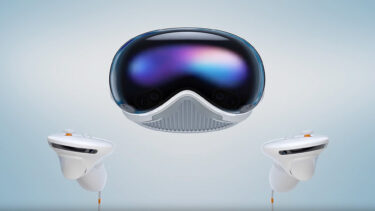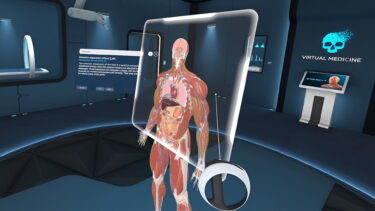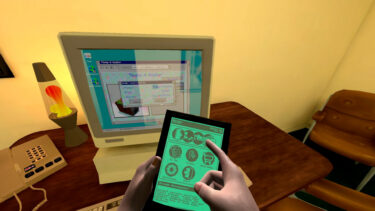Virtual reality can do much more than games. Here’s how a PSVR 2 app helped me better understand my back injury and what I need to heal.
Gaming is by far the most popular use case for virtual reality today, but it’s only one of the reasons I’ve been writing about the technology for the past seven years.
The medium has a lot to offer: You can use virtual reality to work, learn, explore the world, and visualize complex structures (see 36 Reasons why VR is Great Outside of Gaming). I had dabbled with learning apps here and there, but in most cases more out of professional interest than passion, or because I could see a concrete benefit for myself.
That changed when I started looking deeper into the causes of my back pain. Thanks to a recently released VR app for Playstation VR 2, I took a journey inside the human spine and gained visual insights that will help me with rehabilitation and prevention.
An unexpected diagnosis
Attentive readers will recall my June article in which I described how 2-3 weeks of prolonged sitting and a subsequent incident on a hike led to a flare-up of my back pain.
As it turned out a few weeks later, the problem was not trivial: the pain was getting worse and radiating into my right leg, so I had an MRI done. The diagnosis: a herniated disc at L5/S1. A pain-free daily routine and a return to the active life I led before the injury will take months.
I took a few weeks off to get the pain under control and no longer delay the healing process. During this time, I had time to research the causes of my injury and how to recover from a herniated disc. I read a lot, listened to podcasts, and watched videos on the subject.
The most impressive insight into my back problem came from the VR app Human Anatomy VR, which was released a few weeks ago for Playstation VR 2.
The wonder of the human body
The VR app offers an immensely detailed 3D model of the human body and its components: it depicts more than 13,000 anatomical structures, divided into 14 different systems, including bones, tissues, arteries and nerves. In addition, there are 21 microanatomical models and 500 animations that help you understand which bones and muscles are active during certain movements.
The VR app is intended for high school and medical students, health professionals, and for athletes and sports enthusiasts like me.
The 3D model and each of its parts can be rotated with your hands and zoomed in and out at will. To examine the spine, I switched to what’s called “Ant Mode,” which allows me to shrink to ant size and explore even the smallest structures of the body. In this mode, I penetrated through the skin into the lower back and into the area around the affected disc.
Fascinating insights
There I was, looking up the spinal canal, seeing the spinal cord and the spinal nerves that emerge from it, connecting further down the body on both sides to form the sciatic nerve, the thickest and longest peripheral nerve in humans.
In close proximity to the herniated disc, I was able to visually understand the extent to which the leaking fluid of a disc, the so-called nucleus pulposus, can compress the sacral nerves and why (in my case) it compromised the S1 nerve root but not the L5’s. Something I could not see in the pictures I found online.
For better discrimination, I can highlight individual anatomical elements and see medical information about them. For example, I can read which nerve root is responsible for which muscle, which can help with self-diagnosis.
There’s another remarkable feature of the VR app: I can move a glass pane through the body in front of me, which then shows a cross-section of the body, as seen in X-rays and MRIs (see trailer above). This 2D view helped me better understand and interpret the MRI scans of my back.
My verdict: (3D) knowledge is power
An examination of the muscular system was also useful. As mentioned earlier, Human Anatomy VR can display 15 different body systems, and you can show or hide them separately and even show different layers of them.
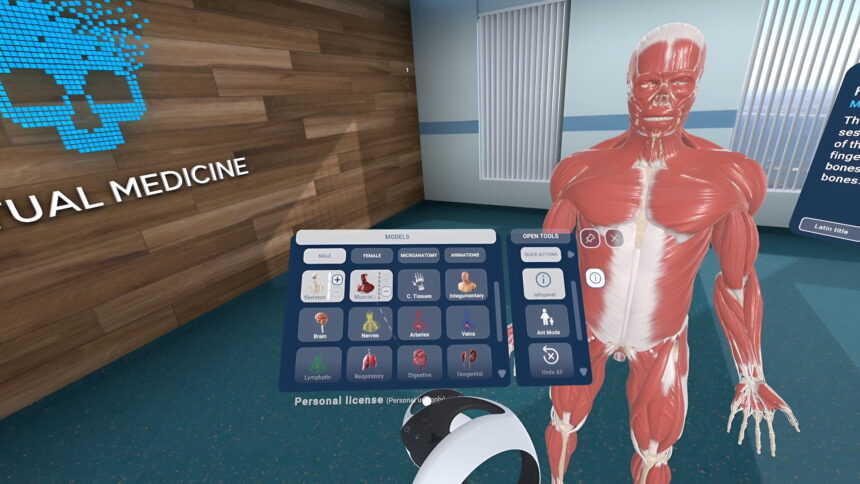
This allowed me to expose the deep layers of muscle around my lower back and buttocks one by one (alternatively, you can remove the muscles by hand). If I ever feel tension in a muscle, I can more easily identify it with the VR app and treat myself more specifically.
In conclusion, I can say that Human Anatomy VR gave me a deeper understanding of my injury in a way that pictures from the Internet could only do so much.
I have a better idea of what is going on in my body, what is causing my pain, and what is needed to heal. Since learning about the structure of this part of my body, I have a greater respect for my body and its limitations. The visual knowledge I have gained will help me with my rehabilitation and hopefully prevent further herniations.
Technically flawless on PSVR 2
Human Anatomy VR is also available for Meta Quest, but thanks to the power of the PS5 and Playstation VR 2, I was able to navigate the 3D model at high resolution and frame rate. A noticeable dragging of the image in places suggests that the developers are using Sony’s reprojection technology, which did not significantly affect my VR experience, but may bother some users.
Thanks to a detailed tutorial and simple controls, the VR app is pleasant to use after a short time. I just wish I could move with the left analog stick instead of the right. Alternatively, there is a teleport function.
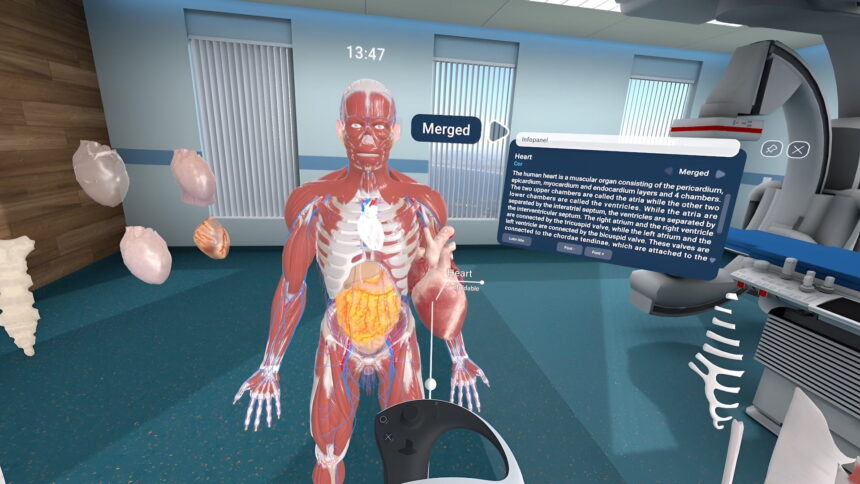
In the future, I hope Virtual Medicine will add more muscle animations. As a fitness enthusiast, I want to know exactly which muscles are being used and how much during each movement. It would be even more awesome if you could move the 3D model by hand and study the workings of the muscles involved in detail.
Human Anatomy VR is available in different versions and licenses for students, professionals and institutions with additional features such as multi-user collaboration. More information can be found on the official website. For the features described in this article, simply purchase the VR app from the PlayStation Store.
Source: Mixed News

